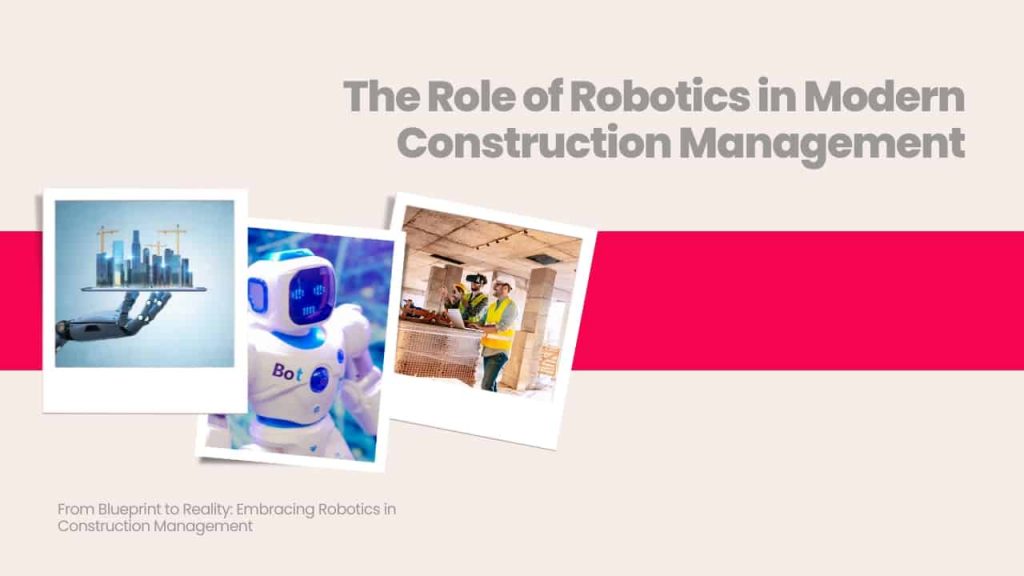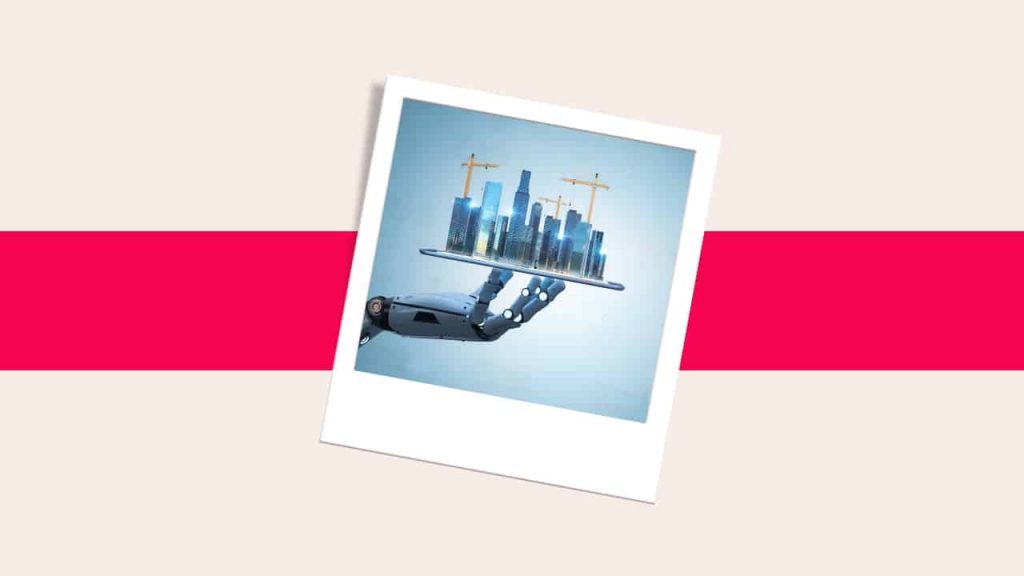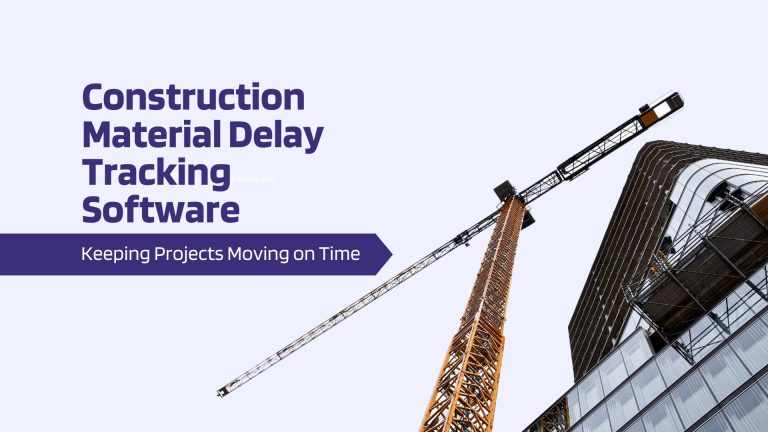
In this technology-driven era where automation and artificial intelligence is the new buzz, implementing automation in construction is the need of the hour. From AI chatbots to self-driving cars, automation is taking over every field. Meanwhile, using robotics and automated tools in construction would play a significant role in transforming the industry. It is a massive industry with a ubiquitous spread globally. There has been technological stagnation in this industry for the last 20 years with as low as 1% of technical advancements taking place. Automation and digitization would have a profound impact on revolutionizing the construction industry. Planning to start your own construction business? Here’s a complete guide to start your construction business in India.
Significance of Robots in Construction
Robots are highly efficient and tend to produce error-free work. Their use on working sites would increase productivity by many folds. These robots are incorporated with sensors, cameras, and an inbuilt software program to carry out different tasks that are repetitive in nature. They can be used to perform the following functions:
Structural Layout
The first and foremost step of any construction project is the layout of the foundation. However, this process is highly time-consuming. When done with utmost care and precision, the manual layout can give up to 98% accuracy. This could be optimized by using a remote-operated robot that could do the markings of the layout with high precision and 100% accuracy. It works 4-5 times faster than human labour, therefore it’s more productive and cost-effective.
Masonry
Robots can also be seen in the field of masonry where automated machines lay the bricks. The process is highly productive, speedy, and error-free. These are highly efficient and can build a wall of up to 4000 bricks in a day which would otherwise require 4-5 labours working restlessly to achieve the same target. These robots are 3-4 times more productive as compared to the labour work done by the masons. This will have a huge impact on reducing the labour cost.
Unmanned Aerial Vehicles (UAV)/Drones
Drones are autonomous flying vehicles with inbuilt cameras to capture different aspects of sites. These are very effective in inspecting and surveying the working sites with precision. They are reliable and give better insights into the construction site thus improving the working efficiency.
Fabrication and Positioning of Building Materials
Several robots are manufactured worldwide to perform heavy construction tasks. Rationalising works like positioning steel beams for the meshwork or fabricating ceilings using robots will help manage the risk factor and save manpower to a large extent.
Automation & Robotics in Construction

Automation is the need of the future. With the increasing demand for housing and buildings resulting from an exponential rise in the population, automated building systems will greatly contribute to the looming construction industry. Following are some examples of automation in construction.
Prefabricated Walls
In this process of automation building system, brick elements are prefabricated in factories and are transported to the construction site. These prefabricated elements are then assembled and added to the building structures. They reduce the onsite workload and help minimize the risk of vandalization, material wastage and extreme weather conditions. They also cut down the labour cost and therefore are highly cost-effective.
Autonomous Construction Machines
Another technological innovation in the field of construction is AI-driven mobile machinery. Controlling and monitoring portable construction machines such as bulldozers, excavators, dumb trucks and trenchers for performing earthworks will ease the complex fieldwork. These machines do not require an operator to work rather they operate via computer-assisted commands. They ensure safety and reduce the labour work required on the construction sites.
Automation in Manufacturing & Material Transportation
Automation is likely to be very useful in the manufacturing and transporting of construction materials. Building customized concrete elements for roofs, walls, ceilings, and floors in the manufacturing units and transporting them to the sites would increase the working efficiency by many folds.
AI in Construction and Computer-Assisted Planning

AI with human intervention can work wonders in the management of worksites. As the use of AI continues to soar in every field, its implementation in construction can assist in numerous ways from increasing on-site productivity to carrying out tedious tasks. The multiple advantages of AI follows as below:
Data Analysis
It can help in analyzing data on the supply and resources and daily work done. Furthermore, it can help in tracking the cash flow and expenses and keep a check on the progress of the work site.
Design & Planning
AI-assisted tools can help in creating 3D designs of the building layout and infrastructure. These designs are easy to access and give a clear view of the work process. The outcome of using such tools is highly accurate and less prone to error.
Manage Multiple On-Site Projects
AI-assisted software and applications are prevailing in the market to manage construction businesses with great precision. These applications have made supervising the building site and managing the workflow, accurate and hassle-free. Onsite is a leading app to streamline your construction business and manage your vendors, clients, and labour work with ease.
Avoid Mishaps on the Worksite
The use of AI can be extremely helpful in detecting machine malfunctioning and recognizing safety hazards at project sites. This will help avoid mishaps and ensure maximum safety of the workers and labours.
Advantages of Automation & Robotics in the Construction Industry
Automation is the key to a successful future perspective. Listing its various advantages as follows.
- High working efficiency: Automated construction machinery can work with greater precision and for longer durations without getting fatigued. Moreover, they are faster and error-free making them highly efficient.
- Increased productivity and scalability: With a progressive approach to on-site work, an automation building system tends to increase productivity by increasing speed. Managing the projects through digitization and keeping an eye on the shooting troubles will further aid in rising productivity.
- Ensures Safety: Certain tasks that involve risks of injuries and harm to workers can be easily carried out by automated machines, ensuring maximum safety of the workers. Also, drones and AI detectors can help in spotting malfunctioning and resolving them without any damage to life and materials.
- Cost-effective: They are cost-effective as they cut labour cost and performs tasks efficiently at a higher pace.
- Reliability and accuracy: These are computer-assisted machines and tend to follow commands without any scope for errors as a result making them more reliable and accurate.
Liable Challenges in the Automation of the Construction Industry
Apart from automation being a bliss to the construction industry, it also has some rare and nitpicky disadvantages. It is advised to have a knowledge of these disadvantages so that they can be resolved at the earliest.
- High capital investment: Manufacturing of automated machines and robots requires high capital investment which could be a challenge in modernising this industry.
- Risk of unemployment: In developing countries like India where a marked fraction of the population is employed as labours, automation in construction would increase the risk of losing jobs for many individuals.
- Thorough understanding of machines: Automated machines and robots do require humans to operate them. This demands a thorough knowledge of machines among workers which could be a hassle in the beginning. However, the problem can be rectified by giving initial training and a demo of the equipment.
- Transportation and maintenance: The automated machines are usually heavy weighted and bulky therefore transporting them to the working site could be a hassle. Moreover, they require high maintenance and timely cleaning to ensure their proper working and long life.
Try Onsite, #1 Tool For Site Tracking







